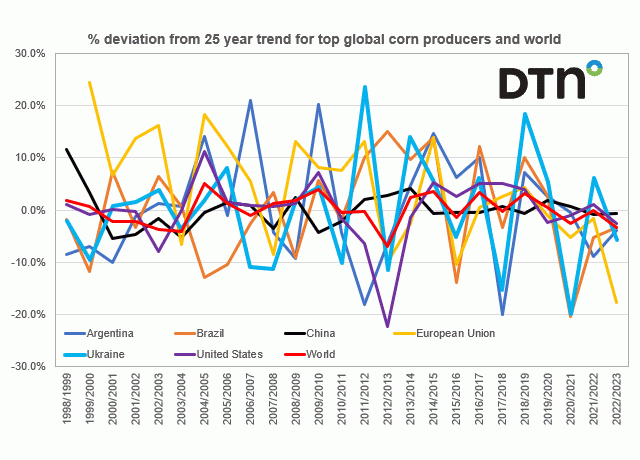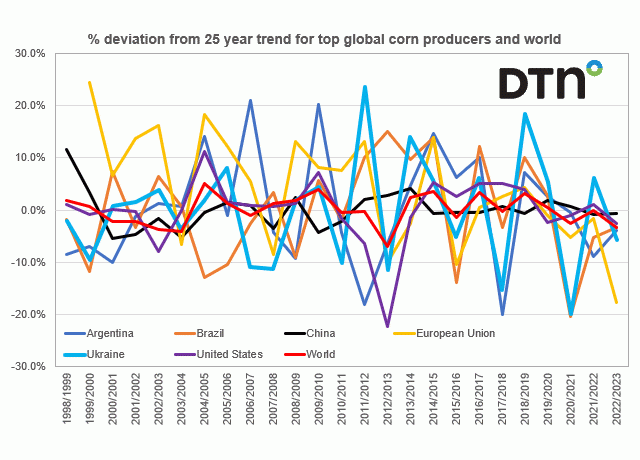Fundamentally Speaking
Changing Soybean Conditions
Similar to what we did with corn, this graph shows the soybean crop condition change from week 23 (around the middle of June) to week 37 (the middle of September) on the left-hand axis for the top 18 soybean producing states using our usual system (where we weight the crop based on the percent in each category and assign that category a factor of 2 for very poor, 4 for poor, 6 for fair, 8 for good, and 10 for excellent and then sum the results).
The right-hand axis reports the percent change in crop ratings from week 23 to week 37 and we also show in the yellow circles the standard deviation of the 14-week change for each of the 18 states.
P[L1] D[0x0] M[300x250] OOP[F] ADUNIT[] T[]
The standard deviation is a measure of the amount of variation or dispersion of a set of values as a low number indicates that the values tend to be close to the mean while a high standard deviation indicates that the values are spread out over a wider range.
Hence those states that have large week to week variations in crop conditions will have a higher standard deviation than those that do not.
Right from the beginning of the growing season concern was being expressed about the very dry conditions in Minnesota and the Dakotas and this was reflected in very low crop ratings in week 23 particularly in the Dakotas.
Unfortunately, weather did not improve over the past three months but instead heat and dryness were pervasive all season and all three saw crop conditions decline by the largest percent from week 23 to week 37 led by SD, down 18.7%, MN off 15.9% and ND off 9.8% while both NE and NC saw crop ratings fall by over 5% during their period.
On the other hand, like in corn, both MI and WI along with sections of IL were quite dry at beginning of year but did get good rains over the summer and as result all three saw the greatest improvements in crop ratings at up 6.3%, up 7.2% and 4.1% better respectively.
Finally, though IL did see a fair amount of week-to-week variability in their crop ratings, their standard deviation figure of 21.6 is well below the variability seen in Minnesota and the Dakotas.
(c) Copyright 2021 DTN, LLC. All rights reserved.






Comments
To comment, please Log In or Join our Community .